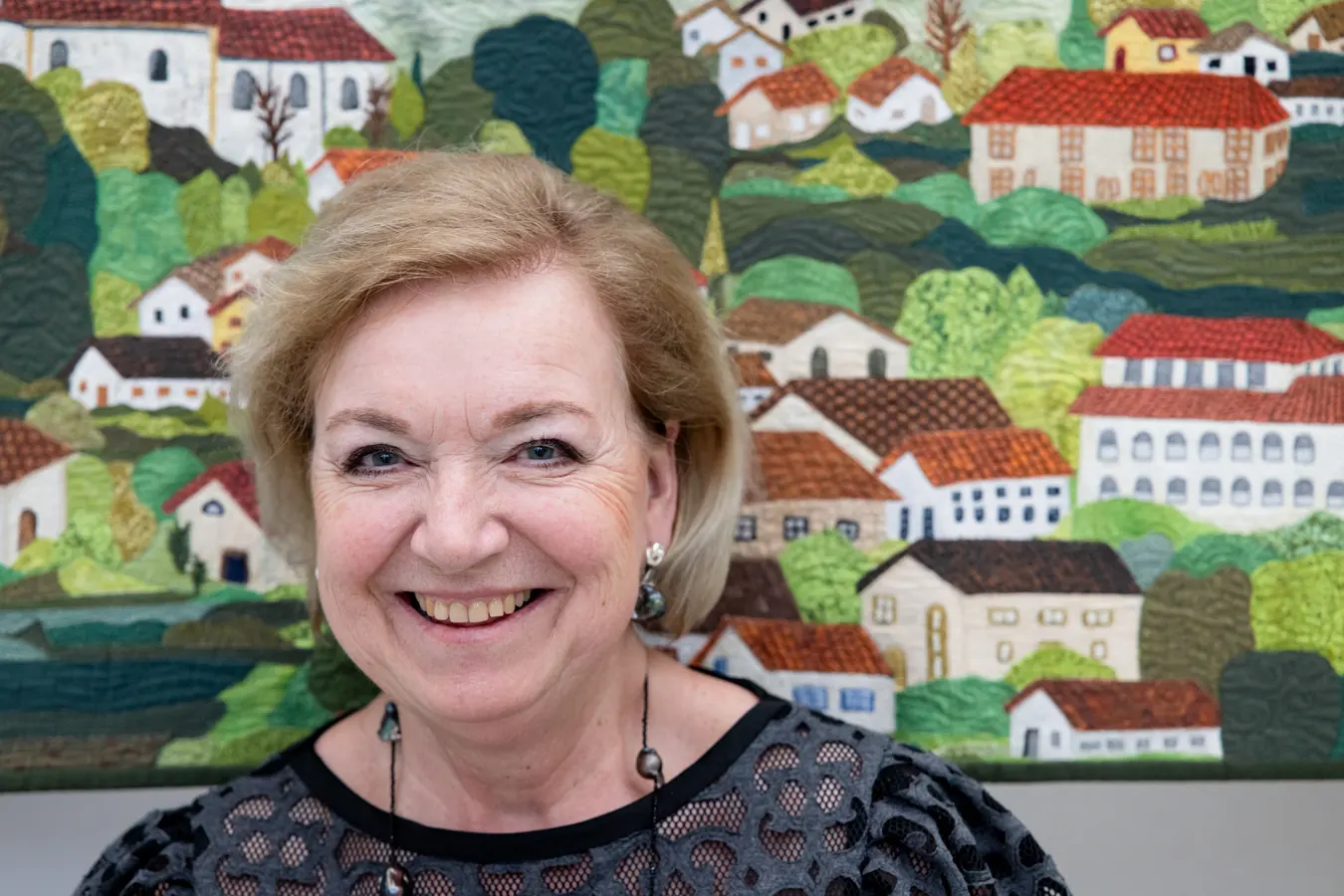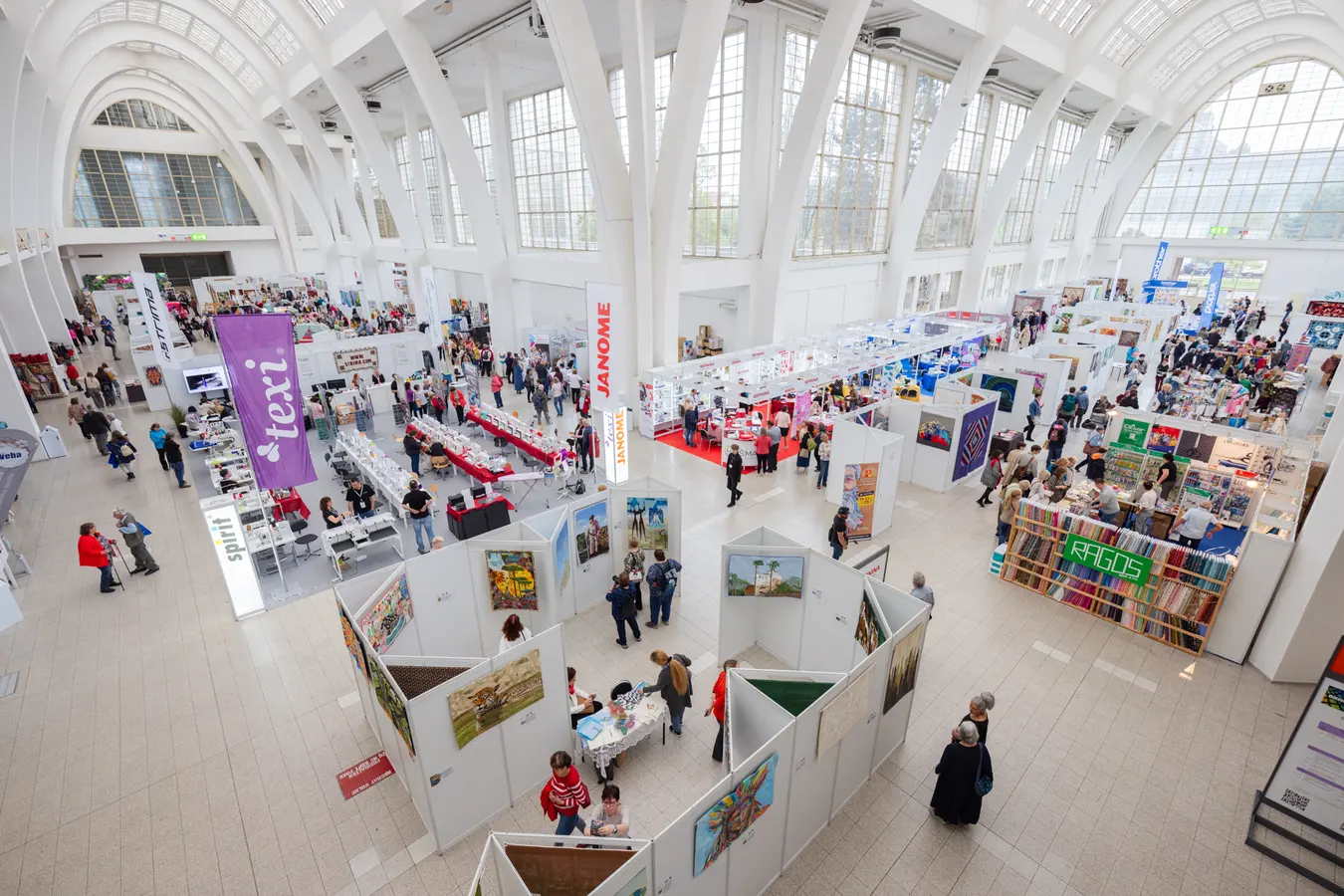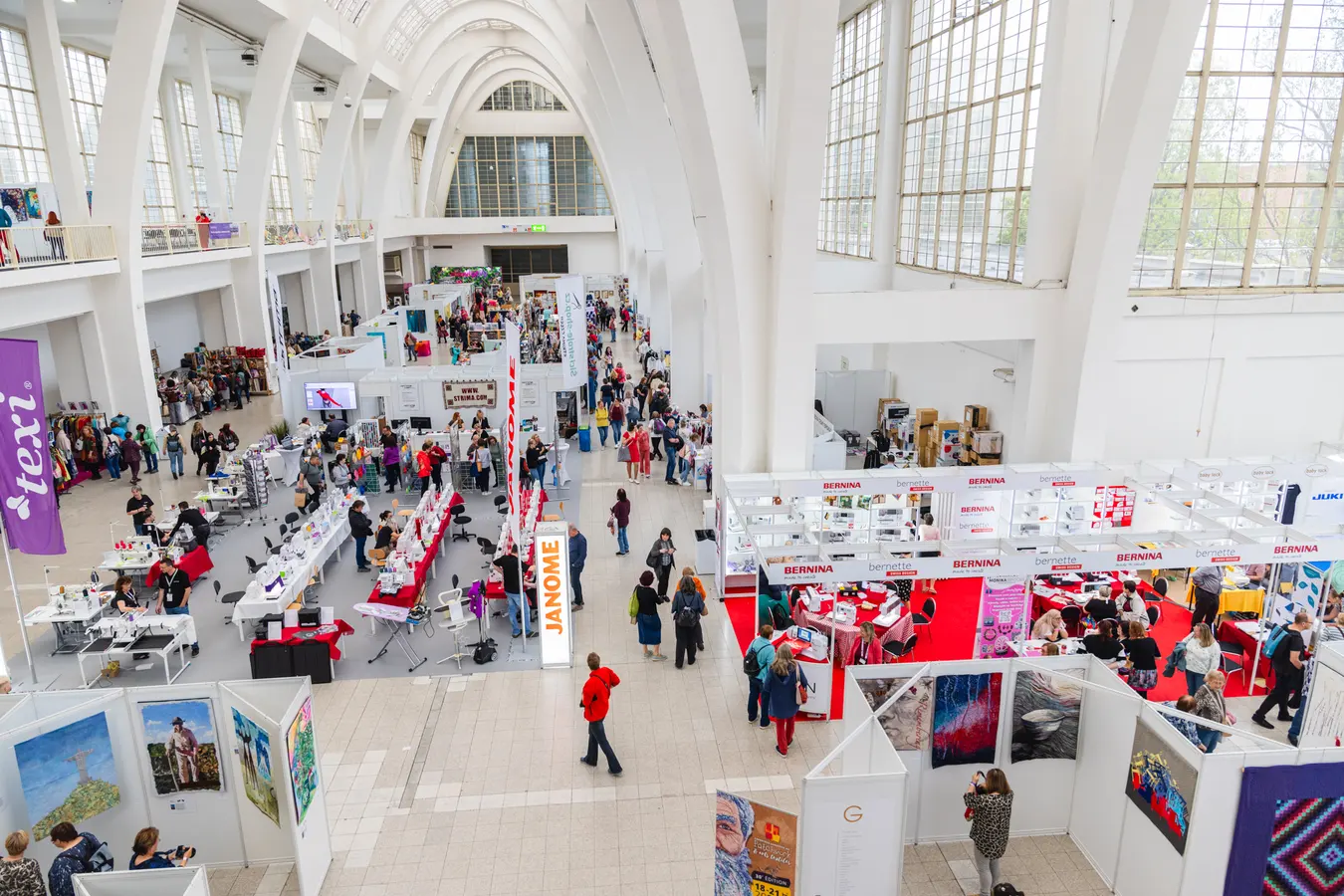Hall A is a Patchwork Cathedral
April 26, 2025 / 1:23 PM
The artistic director of the exhibition, Jana Štěrbová, is very pleased with the atmosphere of the exhibition hall. “I have been to many world exhibitions, and there is no place that offers such an intensity of gently diffused daylight, which is absolutely the best for showcasing colors and the work with colors. It’s one of the main criteria when creating a textile piece,” she said. How does she select the works, what is the most challenging part, what special exhibits were brought this year, and what were the beginnings like? That was the topic of our following interview.
You could say you are the mother of the project. How challenging is it to select collections for this exhibition? And what motivates you?
It’s challenging not only because we shouldn’t repeat the same collections, the same artists, and the same types of work every year. But it’s also challenging because over the past 17 years, we have educated and spoiled our audience to the point where it’s hard to please them. Paradoxically, by raising the quality, we have created a sort of whip for ourselves.
What is the most interesting feature from foreign galleries this year?
We definitely have to mention Brazil — it’s a gallery from the farthest country and the first ever from South America to be hosted at the exhibition. Secondly, I would highlight the French exhibition EPM as the most valuable and interesting gallery. Every year, they purchase one winning quilt from their competition and build a collection of these quilts. And we are the first exhibition ever to be lent this complete collection. They themselves call it the crème de la crème, the best of the best. Thanks to our long-term cooperation, we have the honor this year not to display just one year’s winners, but the very best quilts from over the past 20 years.
Is this year’s exhibition different? How has it evolved?
It’s definitely different again — with an even higher quality of works and a strong focus on international collections and cooperation. We have seven collections where the authors are international. Two of these collections were created solely through online collaboration, meaning that the authors, coming from all around the world, never actually met in person. Nevertheless, through online meetings, they managed to unify the dimensions, colors, and themes, and the results are amazing. Thanks to this, the exhibition features artists from New Zealand to Northern Europe.
That suggests your field appeals to younger generations as well. What’s the target group of creators and visitors like?
I believe that success in our field is maintaining at least the same level of interest. What’s interesting is that new groups are joining — mothers on maternity leave, managers who seek a break and physical work, art therapy after mentally demanding jobs. One significant young Czech artist is Bára Bartošová, who has her own gallery here this year. She is by far the youngest participant with her own gallery, and I believe we will see more people like her in the future. It also depends on clubs nurturing their new members, encouraging some to stay with quilting and eventually become independent artists.
What personally brought you to patchwork?
The very first impulse, like for many people during socialism, was sewing itself. I’m from a generation where, if you didn’t sew something yourself, you simply didn’t have it. After 2000, many people my age were in a situation where their children were grown up, and stores were offering an overwhelming abundance of everything we used to sew ourselves with great effort. We all had sewing machines at home, we all had the skills, and we wanted to create. At that time, patchwork and quilting started booming across Europe. It caught the attention of many women of my generation, including me. And since we were working in the tourism industry at the time, it was easy for us to organize an exhibition for ourselves. We started visiting major world exhibitions, bringing authors and galleries here. Czech women were finally able to travel abroad, but in our generation, the language barrier was still strong, so we translated literature, guides, and surface design methods, while also working to bring the emerging Czech quilting scene into the European and global community. And we succeeded — today, I think we are absolutely comparable. In an international gallery, no one can tell which quilt is Eastern, Western, Czech, African, or Nordic.


